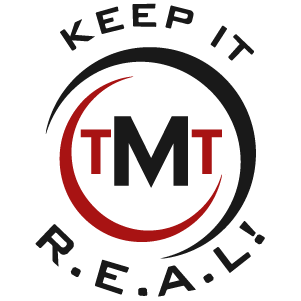In today’s fast-paced business environment, organizations rely heavily on various services to support their operations. Service Level Agreements (SLAs) play a crucial role in ensuring that these services meet the expected standards and are delivered in a timely manner. This article aims to provide a comprehensive understanding of SLA compliance and offer practical steps to ensuring adherence to these agreements.
Understanding The Importance Of SLA Compliance
Before delving into the details of SLA compliance, it is vital to define what SLAs are and why they matter in business operations.
Defining SLAs – SLAs are contracts between a service provider and its customers that outline the agreed-upon levels of service delivery. They specify performance benchmarks, response times, and other critical metrics.
The Role of SLAs in Business Operations – SLAs ensure that both parties have a clear understanding of what to expect from each other. They serve as a benchmark for service quality and provide a framework for the resolution of any disputes that may arise during the service delivery process.
SLA compliance is crucial for maintaining a positive relationship between service providers and customers. When service providers adhere to the terms outlined in the SLA, it instills trust and confidence in the customers, demonstrating reliability and accountability.
SLA compliance also plays a significant role in risk management. By setting clear expectations and standards for service delivery, SLAs help mitigate potential risks and uncertainties. This proactive approach not only enhances operational efficiency, but also minimizes the likelihood of service disruptions or failures.
Key Elements Of An Effective SLA
In order to ensure effective SLA compliance, organizations need to pay close attention to several key elements.
Identifying The Services
It is crucial to clearly define the services that are covered by the SLA. This includes specifying the scope and the expected outcomes of each service. A well-defined service catalog is essential to avoid misunderstandings and disputes regarding service delivery.
When identifying services, it is important to consider the criticality of each service to the organization’s operations. Some services may be more mission-critical than others, requiring higher levels of performance and priority in case of issues. By categorizing services based on their importance, organizations can allocate resources and prioritize accordingly, ensuring that key services receive the necessary attention.
Setting The Performance Standards
SLAs should clearly state the performance standards that the service provider must meet. This includes metrics such as response times, uptime percentages, and resolution times. These standards should be realistic and achievable to ensure that the agreed-upon service levels are met consistently.
Performance standards should also be periodically reviewed and updated to reflect changing business needs and technological advancements. As the organization evolves, so too should the SLA performance metrics to align with current objectives and industry standards. Regular reviews also provide an opportunity to identify areas for improvement and optimize service delivery processes for better efficiency and effectiveness.
Defining The Monitoring Process
Establishing a robust monitoring process is essential to track service performance and identify any deviations from the agreed-upon levels. This process should include regular reporting, performance reviews, and mechanisms for addressing any non-compliance issues.
Additionally, the monitoring process should incorporate proactive measures to anticipate potential issues before they escalate. By implementing early warning systems and predictive analytics, organizations can mitigate risks and prevent service disruptions, ultimately enhancing the overall reliability and quality of the services provided under the SLA.
Steps To Ensure SLA Compliance
Regular Auditing And Reporting
Regular auditing helps ensure that the service provider is adhering to the SLA. Audits should be conducted at predetermined intervals and cover various aspects of service delivery. These audits should provide actionable data and insights that can drive continuous improvements in service quality.
Reporting mechanisms also play a vital role in ensuring SLA compliance. Regular reports should be generated and shared with both the service provider and the customer. These reports should provide an overview of service performance, highlight any non-compliance issues, and outline steps taken to address them.
It is essential to involve key stakeholders in the auditing process to ensure comprehensive coverage. This can include representatives from both the service provider and the customer’s organization, as well as independent auditors if necessary. By involving multiple perspectives, organizations can gain a holistic view of SLA compliance and identify areas for enhancement.
Implementing SLA Management Tools
SLA management tools can streamline the process of monitoring and managing SLA compliance. These tools enable organizations to track service performance, generate reports, and automate certain aspects of SLA management. By leveraging technology, organizations can ensure better visibility and control over SLA compliance.
Furthermore, organizations can consider integrating these SLA management tools with other systems, such as ticketing platforms or performance monitoring software, to create a seamless workflow. This integration can help in real-time tracking of SLA metrics and immediate notification of any deviations, allowing for prompt corrective actions to be taken.
Training And Educating Staff
Ensuring SLA compliance requires a collaborative effort from all individuals involved in the service delivery process. Organizations should invest in training and educating staff on the importance of SLA compliance and the specific requirements outlined in the agreements. This includes providing ongoing training and refresher courses to keep staff updated on any changes to the SLA.
Additionally, organizations can conduct regular workshops and simulations to test staff members’ understanding of SLA provisions and their ability to respond to different compliance scenarios. By fostering a culture of continuous learning and improvement, organizations can strengthen their SLA compliance efforts and enhance overall service delivery.
Overcoming Challenges In SLA Compliance
Dealing With Vague SLAs
Vague or poorly defined SLAs can lead to misunderstandings and difficulties in achieving compliance. To address this challenge, organizations should invest time and effort in clearly defining the scope and expected outcomes of each service. Regular communication between the service provider and the customer can also help in clarifying any ambiguities in the SLA.
Conducting regular reviews and audits of SLAs can help in identifying and rectifying any ambiguities or gaps in the agreements. These reviews can provide valuable insights into the effectiveness of the current SLAs and highlight areas for improvement. By continuously monitoring and refining SLAs, organizations can ensure that they remain relevant and aligned with the evolving needs of both parties.
Managing Multiple SLAs
Organizations often have to manage multiple SLAs with different customers or service providers. This can pose a challenge in terms of prioritization and resource allocation. Implementing an SLA management system can help in organizing and tracking multiple SLAs, ensuring that each agreement is given the necessary attention and resources.
Establishing a dedicated SLA management team within the organization can streamline the process of managing multiple agreements. This team can serve as a central point of contact for all SLA-related matters, ensuring consistent communication and coordination across different stakeholders. By centralizing SLA management, organizations can enhance efficiency and ensure that all parties are aligned with the agreed-upon terms and conditions.
Addressing Non-Compliance Issues
Inevitably, there may be instances where non-compliance issues arise. It is essential to have a well-defined process in place to address these issues promptly and effectively. This process should include clear escalation paths, mechanisms for dispute resolution, and penalties for repeated non-compliance.
Conclusion
Ensuring SLA compliance is crucial for organizations to maintain high service quality and meet the expectations of their customers. By understanding the importance of SLA compliance, focusing on key elements of an effective SLA, and following the steps outlined in this article, organizations can establish a robust framework for service delivery and drive continuous improvements in service quality.
While achieving SLA compliance is a critical step toward maintaining exceptional service quality and meeting customer expectations, it’s equally important to market your business effectively to attract new clients. Sign up for Technology Marketing Toolkit’s next FREE MSP Training to master strategies that will help you grow your client base and elevate your business!


